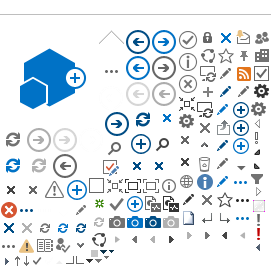(*Equal contribution / #Shared correspondence)
Contreras FV*, Auger GM*, Müller L, Richter V, Huetteroth W, Seufert F, Hildebrand PW, Scholz N, Thum AS, Ljaschenko D, Blanco-Redondo B#, Langenhan T#. The adhesion G-protein-coupled receptor mayo/CG11318 controls midgut development in Drosophila. Cell Rep. 2024;43(1):113640. doi:10.1016/j.celrep.2023.113640
Scholz N*#, Dahse AK*, Kemkemer M, Bormann A, Auger GM, Vieira Contreras F, Ernst LF, Staake H, Körner MB, Buhlan M, Meyer-Mölck A, Chung YK, Blanco-Redondo B, Klose F, Jarboui MA, Ljaschenko D, Bigl M, Langenhan T# (2023). Molecular sensing of mechano- and ligand-dependent adhesion GPCR dissociation. Nature, 615(7954), 945-953. doi:10.1038/s41586-023-05802-5
Buettner JM*, Sowoidnich L*, Gerstner F, Blanco-Redondo B, Hallermann S, Simon CM (2022). p53-dependent c-Fos expression is a marker but not executor for motor neuron death in spinal muscular atrophy mouse models. Front Cell Neurosci, 16, 1038276. doi:10.3389/fncel.2022.1038276
Korobeynikov VA*, Lyashchenko AK*, Blanco-Redondo B*, Jafar-Nejad P, Shneider NA (2022). Antisense oligonucleotide silencing of FUS expression as a therapeutic approach in amyotrophic lateral sclerosis. Nat Med, 28, 104-116. doi:10.1038/s41591-021-01615-z
Buettner JM*, Sime Longang JKS*, Gerstner F, Apel KS, Blanco-Redondo B, Sowoidnich L, Janzen E, Langenhan T, Wirth B, Simon CM (2021). Central synaptopathy is the most conserved feature of motor circuit pathology across spinal muscular atrophy mouse models. iScience, 24, 103376. doi:10.1016/j.isci.2021.103376
Simon CM, Blanco-Redondo B, Buettner JM, Pagiazitis JG, Fletcher EV, Sime Longang JK, Mentis GZ (2021). Chronic Pharmacological Increase of Neuronal Activity Improves Sensory-Motor Dysfunction in Spinal Muscular Atrophy Mice. J Neurosci, 41, 376-389. doi:10.1523/jneurosci.2142-20.2020
Blanco-Redondo B#, Nuwal N, Kneitz S, Nuwal T, Halder P, Liu Y, Ehmann N, Scholz N, Mayer A, Kleber J, Kahne T, Schmitt D, Sadanandappa MK, Funk N, Albertova V, Helfrich-Forster C, Ramaswami M, Hasan G, Kittel RJ, Langenhan T, Gerber B, Buchner E# (2019). Implications of the Sap47 null mutation for synapsin phosphorylation, longevity, climbing proficiency and behavioural plasticity in adult Drosophila. J Exp Biol, 222, 203505. doi:10.1242/jeb.203505
Blanco-Redondo B, Langenhan T (2018). Parallel Genomic Engineering of Two Drosophila Genes Using Orthogonal attB/attP Sites. G3 (Bethesda), 8(9), 3109-3118. doi:10.1534/g3.118.200565
Blanco Redondo B*, Bunz M*, Halder P*, Sadanandappa MK, Mühlbauer B, Erwin F, Hofbauer A, Rodrigues V, VijayRaghavan K, Ramaswami M, Rieger D, Wegener C, Förster C, Buchner E (2013). Identification and stuctural characterization of interneurons of the Drosophila brain by monoclonal antibodies of the würzburg hybridoma library. Plos One, 8(9):e75420. doi:10.1371/journal.pone.0075420
Sadanandappa MK, Blanco Redondo B, Michels B, Rodrigues V, Gerber B, VijayRaghavan K, Buchner E, Ramaswami M (2013). Synapsin function in Gaba-ergic interneurons is required for short-term olfactory habituation. J Neurosci, 33(42):16576-85. doi:10.1523/jneurosci.3142-13.2013
